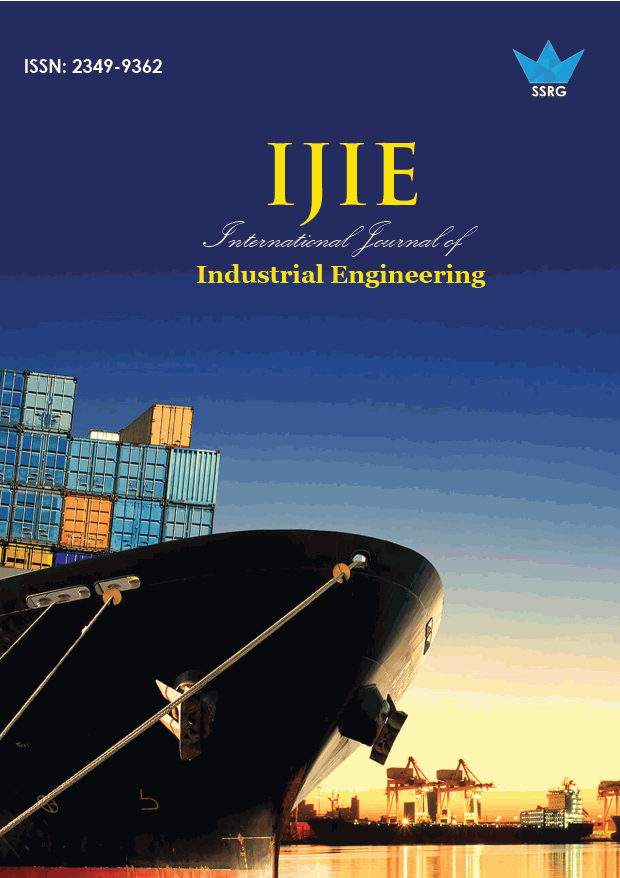Preparation of Safety Manual for Dairy Industry – A Review

| International Journal of Industrial Engineering |
| © 2015 by SSRG - IJIE Journal |
| Volume 2 Issue 2 |
| Year of Publication : 2015 |
| Authors : Nirmal Kumar.B and Sabarninath.P |
How to Cite?
Nirmal Kumar.B and Sabarninath.P, "Preparation of Safety Manual for Dairy Industry – A Review," SSRG International Journal of Industrial Engineering, vol. 2, no. 2, pp. 10-14, 2015. Crossref, https://doi.org/10.14445/23499362/IJIE-V2I3P103
Abstract:
Dairy industry is of crucial importance to India. India is one of the largest milk producing country in the world, In dairy industries milk is from the outsource by farmers and they are processing of milk using various machineries such as pasteurizer, homogenizer, refrigerators and packaging machines. When the dairy employees are working with these machines they can cause health hazards etc.. It affects the surrounding areas and also exposed by the public. Dairy industries creates air pollution and also many environment hazards. In this paper discuss about the possible hazards involved in the milk dairy industries and have control measure for that.
Keywords:
Environment, Dairy, Noise, Hazard, Pollution
References:
[1] Harush D. P, Hampannavar U. S., Treatment of dairy wastewater using aerobic biodegradation and coagulation, Vol. 1, No. 1, 2011, pp. 23-26.
[2] L. Buys, K. Mengersen, S. Johnson, N. van Buuren , A. Chauvin,Creating a sustainability scorecard as a predictive tool for measuring the complex social, economic and environmental impacts of industries, a case study, Journal of Environmental Management 133 (2014) 184 - 192.
[3] Levent Kurt, Sibel Ozilgen,Failure mode and effect analysis for dairy product manufacturing, Safety Science 55 (2013) 195–20.
[4] S. E. Place and F. M. Mitloehner, A review on dairy industry’s role in climate change and air quality and the potential of mitigation through improved production efficiency, J. Dairy Sci. 93:3407–3416 2010.
[5] Natapol Thongplew, C.S.A. (Kris) van Koppen, Companies contributing to the greening of consumption : findings from the dairy and appliance industries in Thailand, Journal of Cleaner Production xxx (2014) 1 – 10.
[6] Gargi Bhattercharjee, S. Bhattacharya, Emission of Ammonia from Ice Factory and its Remedial Action’ Vol. 2, No. 3, September 2012.
[7] Alka Bani Agrawal, R.K. Dave, ‘Replacing harmful refrigerant R22 in a bulk milk cooler’ Vol.2
[8] B. L. Nkambule and A. M. Dlamini, ‘Determination of milk-borne health hazards in raw milk from retail outlets’, UNISWA J. of Agric. 2012
[9] S. Thirumala, M. Pradeep and H.B. Aravind, ’Air borne microbial Hazards in Dairy and Poultry farm workers of Davangere, Karnataka’ (2014).
[10] Hema Prabha.R and Karthikeyan.N, ’Emergency preparedness in a Dairy Industry’ International Journal of Advanced Research (2013), Volume 1, Issue 3, 166-174.
[11] P. M. Tomasula, N. Datta, C. F. Yee, ‘Computer simulation of energy use, greenhouse emissions, and costs for alternative methods of processing fluid milk’, J. Dairy Sci. 97,2014.
[12] A. Banaszewska ,F. Cruijssen , G. D. H. Claassen , ,’Effect and key factors of by products valorisation’, J. Dairy Sci. 97:1893–1908, 2014.
[13] Hamid Sharifia,b,c, Alireza Bahonard, ‘Effect of health disorders of culling on the first or second lactation in Iranian dairy herds’, Preventive Veterinary Medicine (2013) 144– 147.
[14] F. Boccas a. A. Ramanauskas b ‘HACCP “train-in-action” program in the Lithuanian dairy industry’ 2001

 10.14445/23499362/IJIE-V2I3P103
10.14445/23499362/IJIE-V2I3P103